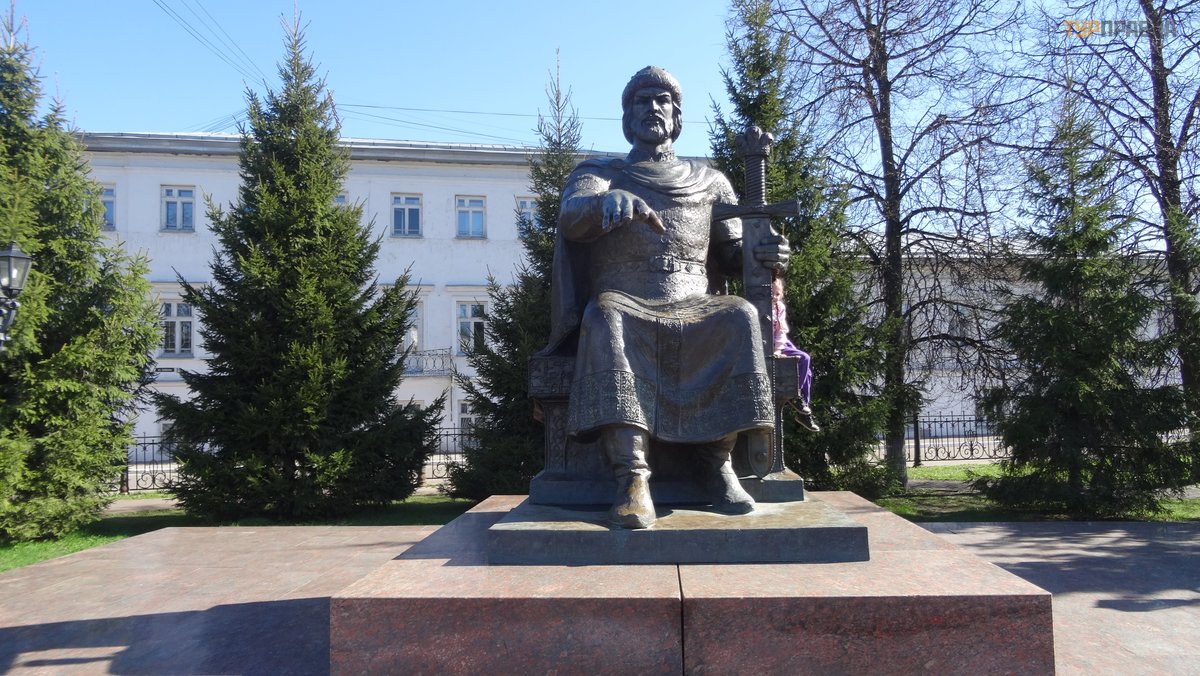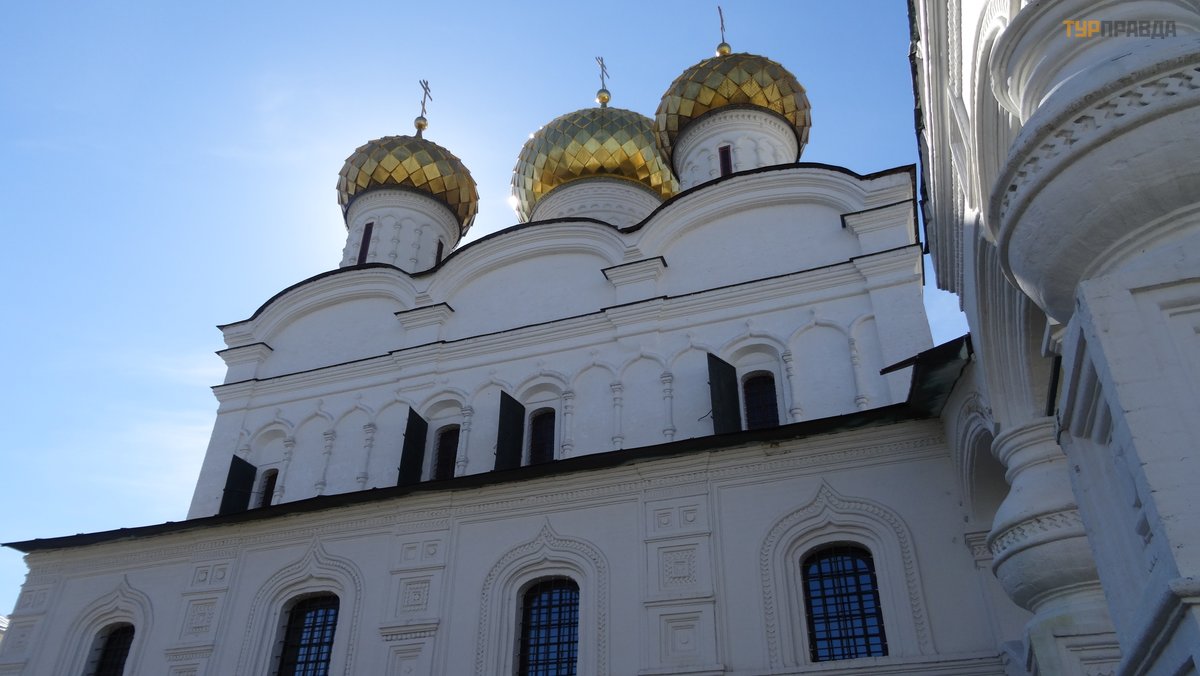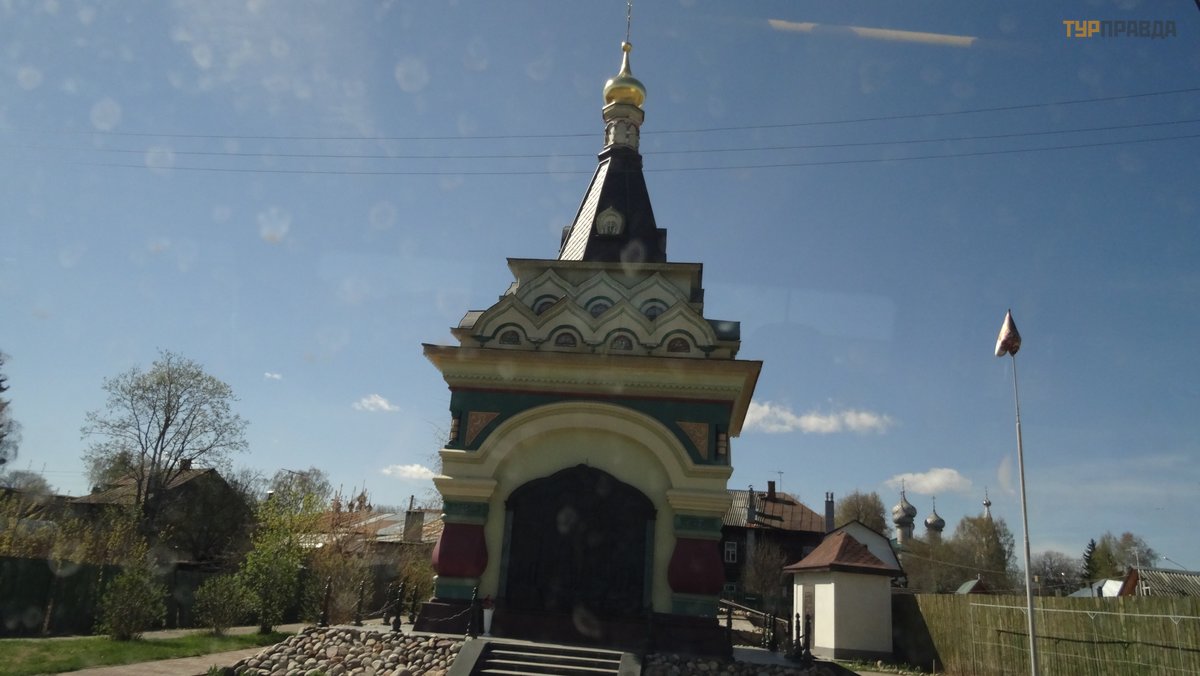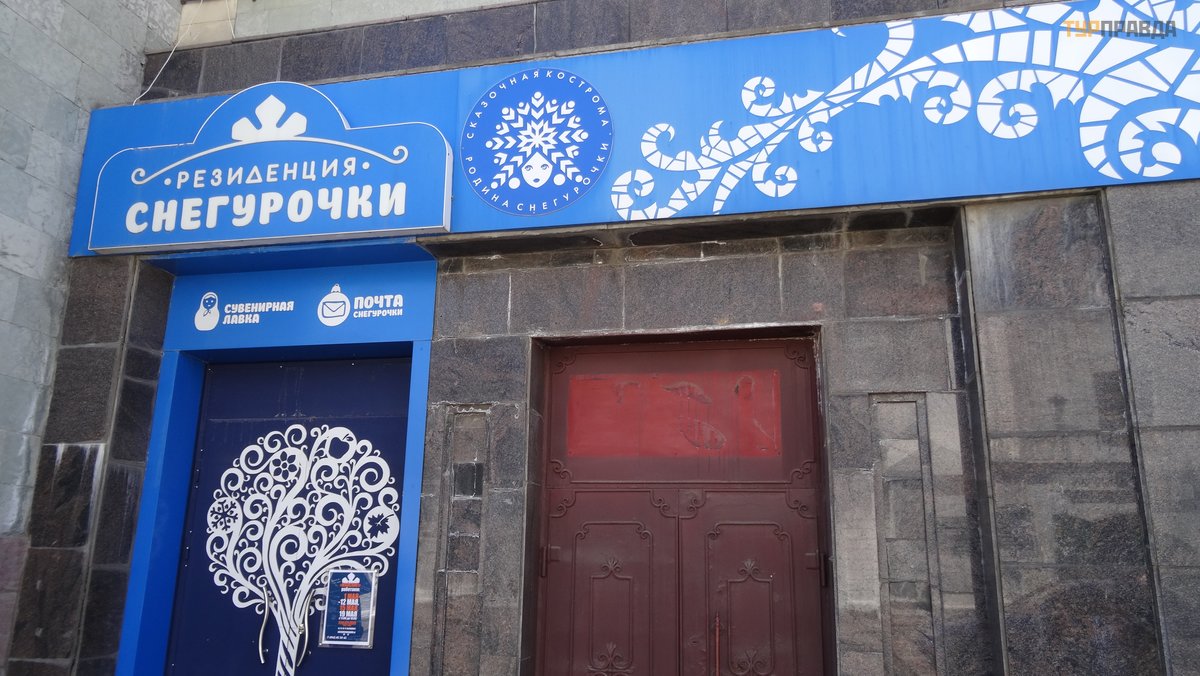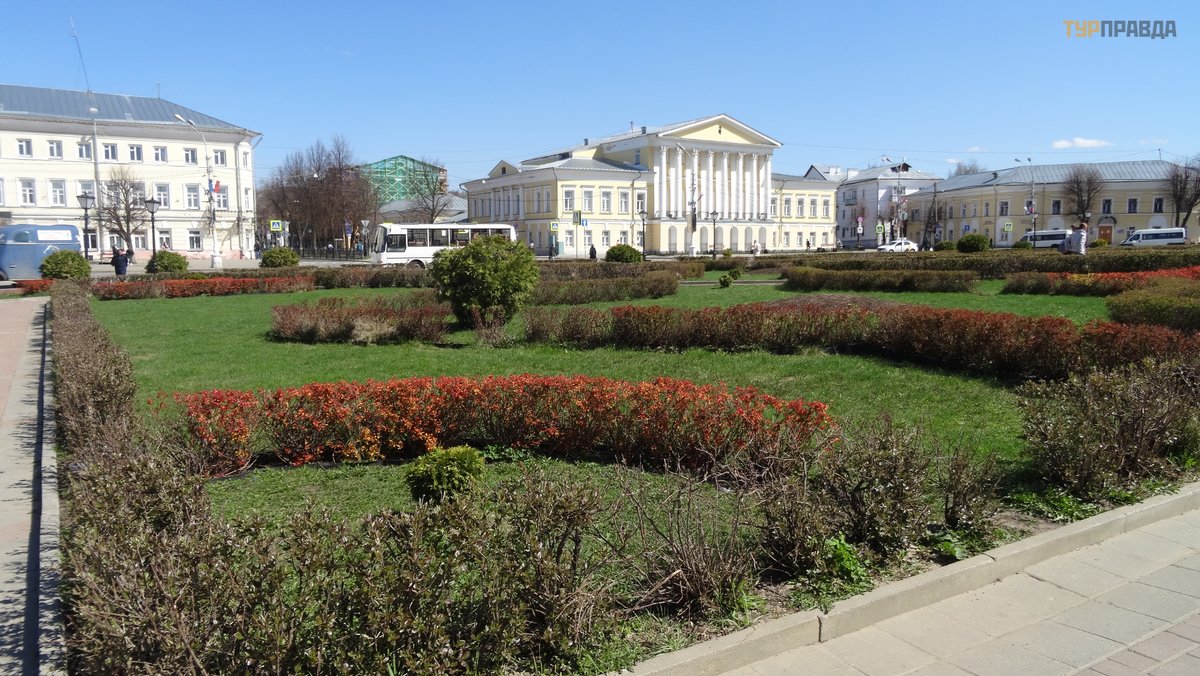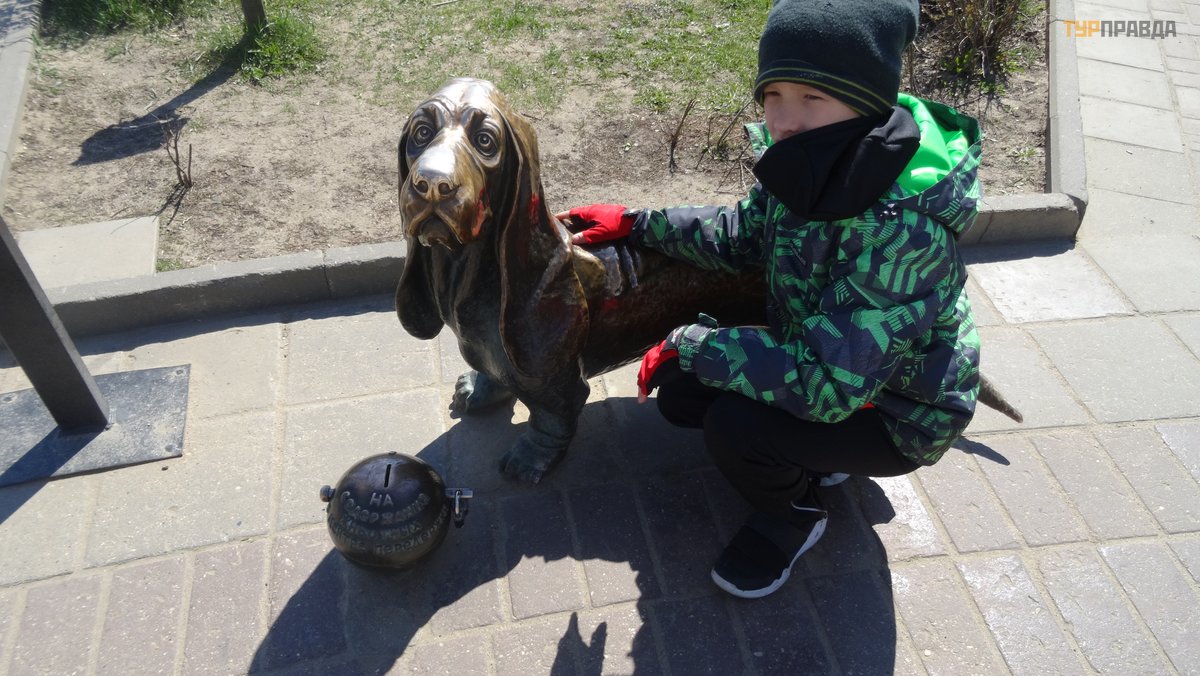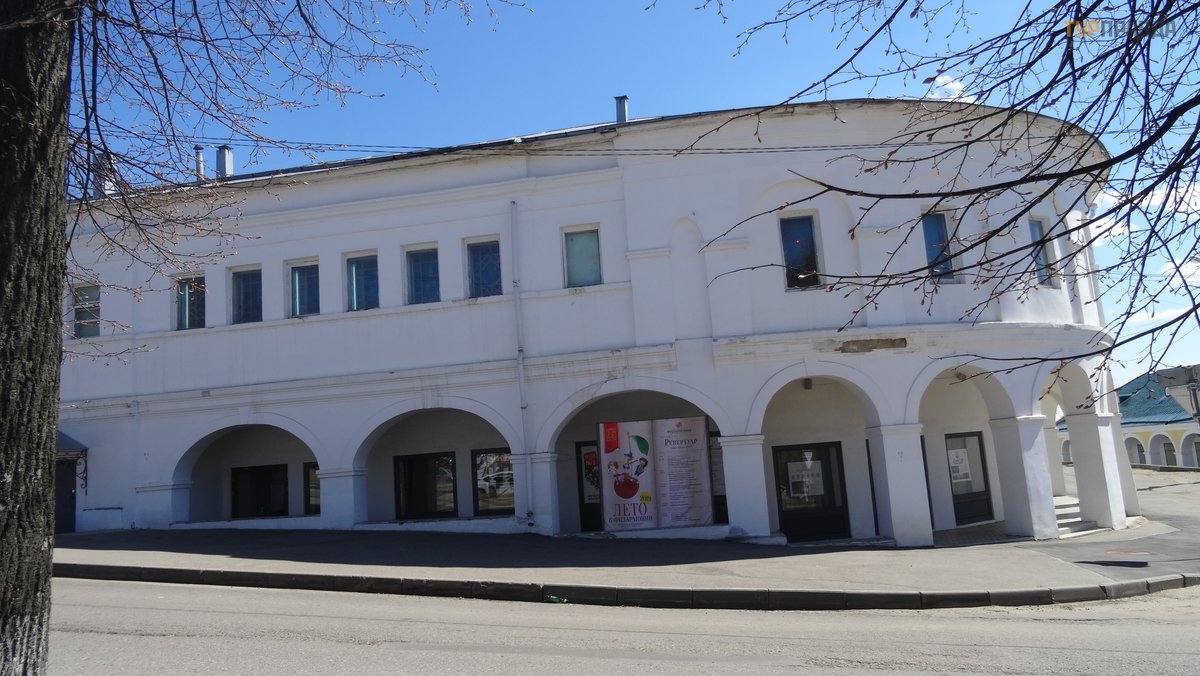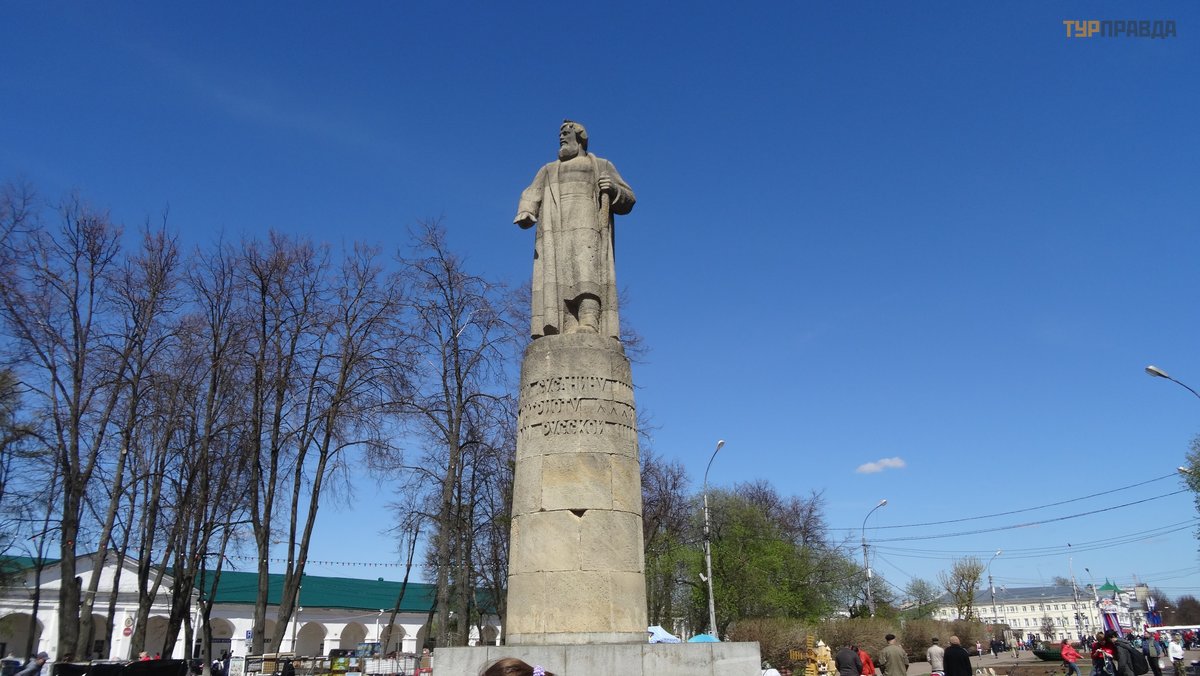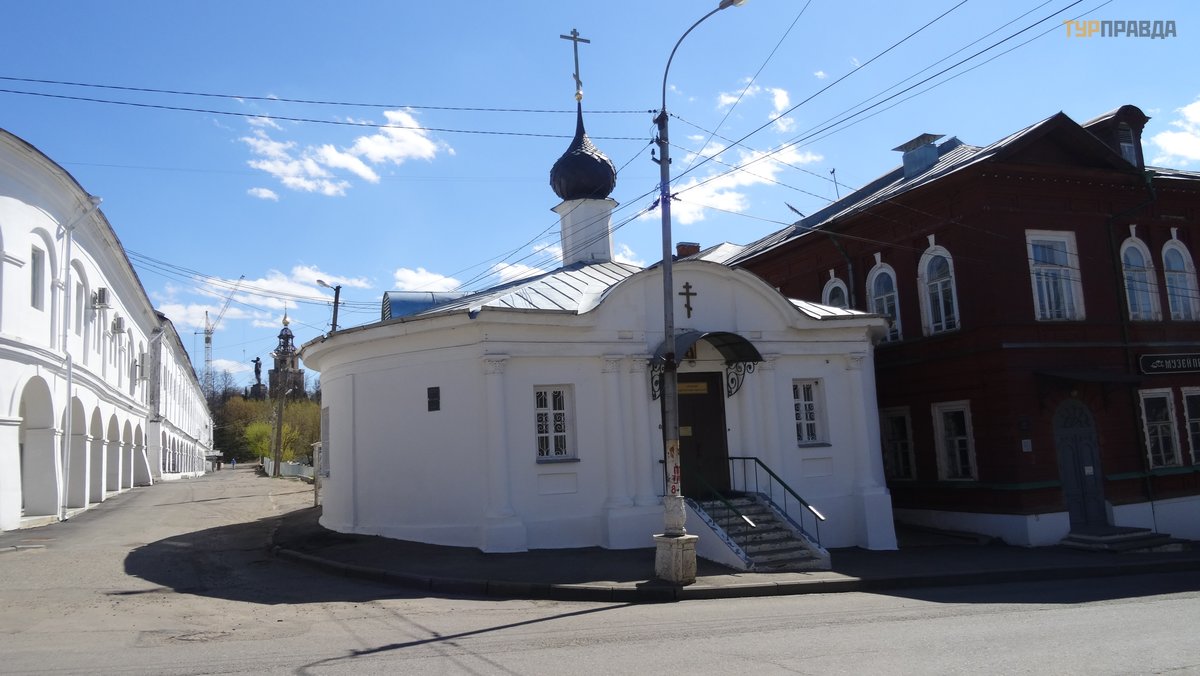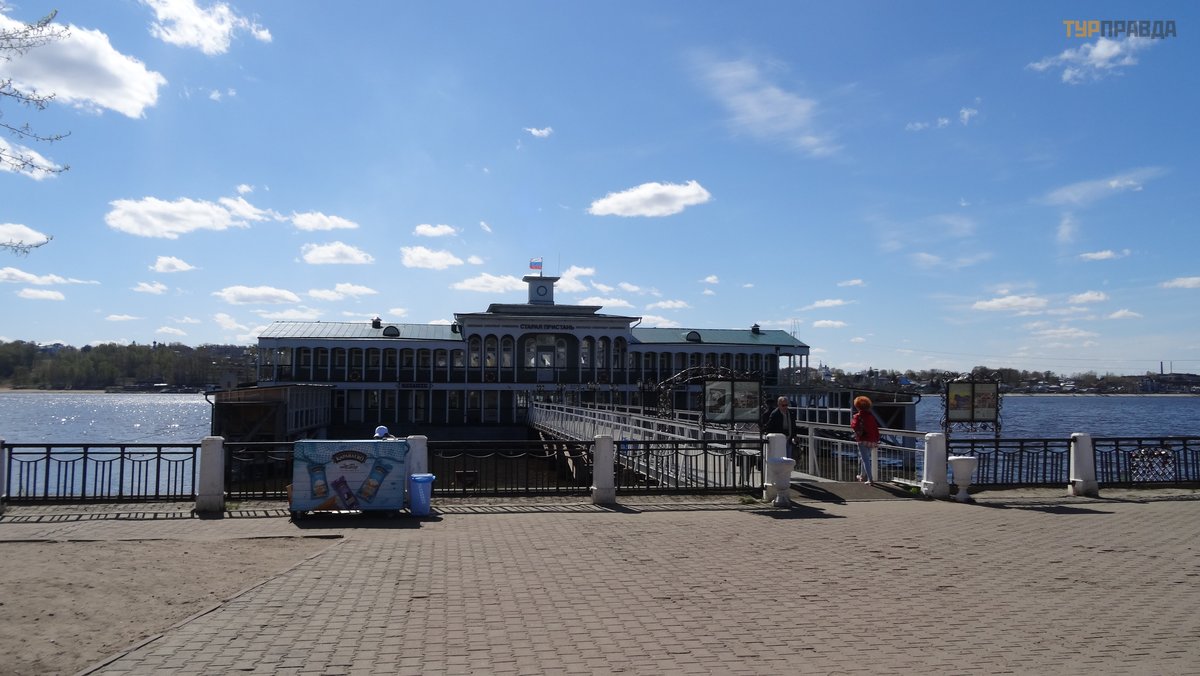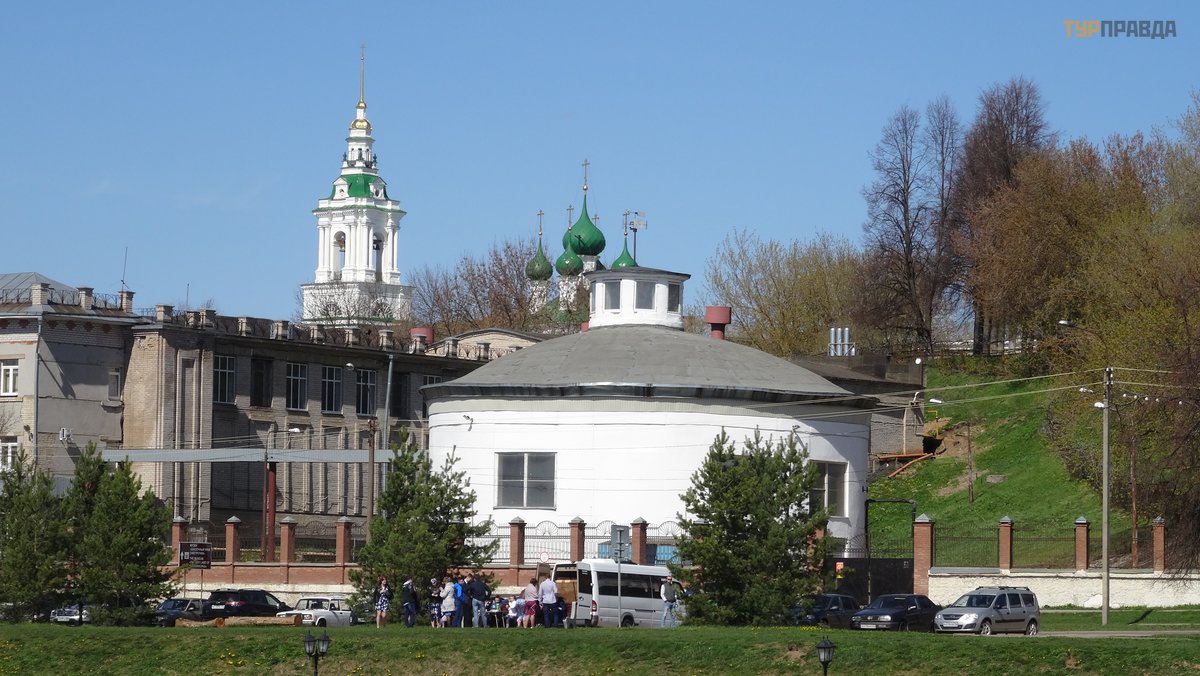Cruise along the Volga from the city of N. (day three)
Today we have Kostroma. The day started very quickly and quickly. At 7.30 we were wished "Good morning" on the ship's radio. After listening to the weather report (warm and sunny weather was promised) and the program of the day, they were invited to breakfast. After a quick breakfast, we didn’t have long conversations, the tours began at 9 o’clock.
Such a wonderful morning - this is how Kostroma met us
Kostroma - “empress” - this is how the city is usually called in folklore. The city is located on the high bank of the Volga, founded by Yuri Dolgoruky in 1152 during a military campaign. In the annals about the appearance of the city, it is said as follows: “There were impenetrable forests in this place, dense jungle”, and robbers were hiding here, from whom “there was no way at all”. Yuri Dolgoruky dealt with the robbers with a “flaming sea”. And the city of Kostroma appeared on the liberated land. And there are several legends about the name of the city. This is a city where destinies were decided in due time and the history of the Russian state was created. Kostroma is also part of the Golden Ring of Russia.
In Kostroma for the first time, there is not much time, you won't go far. There are many excursions - choose any. Of the sights and places where you want to visit and see, there are many (the Internet will help us). Therefore, we choose the most important and famous. Of course, a survey with a visit to the Ipatiev Monastery. The bus is small and the group is small because many fellow travelers have already been in the city. And we were even afraid that the tour would not take place. But everything turned out perfectly.
As clean as a washed city
Wonderful sunny day. Nearly deserted streets. And we are the first to go. Of course, the first stop is at the monument to the founder of the city, Yuri Dolgoruky.
Founder of the city
The townspeople have a belief that by making a wish and rubbing the outstretched hand of the prince (there is also a worn boot), everything will come true. They rubbed the boot, held on to the finger (made a wish). We were the first ones, took a quick picture, got on the bus and hit the road!
The main and biggest stop. Holy Trinity Ipatiev Monastery. One of the oldest monasteries in Russia. The monastery appeared on the arrow of the river. Volga and Kostroma. And again, there are many legends about when the monastery appeared. It was found that in the annals the mention of the monastery appeared in 1432. Another legend says that the monastery was founded in 1330 by the ancestor of the Godunov family. And there is also a version that the brother of A. Nevsky founded the monastery, and a version that the Novgorodians founded the monastery. In general, scientists-historians will have enough work for many years.
Our excursion to the monastery started from here
We are waiting, the guide went for permission to conduct an excursion
The history of the monastery is so long and confusing (and again the Internet to help). On a tour, remembering everything is simply unrealistic. The most rapid development of the monastery begins with the coming to power of the Godunov dynasty. Thanks to their efforts, the monastery gained special significance in the spiritual and political life of Russia. The Godunovs made many donations and they created painting workshops and a library. On the territory there is a tomb of this ancient family. During the Troubles, the monastery experienced periods of decline.
The royal dynasty of the Romanovs began precisely from this monastery. Young Mikhail Romanov lived in the monastery with his mother. Here young Michael was crowned. The monastery is considered the cradle of the Romanov dynasty, and each of the kings considered it his duty to visit the monastery and make generous donations. Members of the royal family considered and revered the monastery as their family shrine.
Before the arrival of Catherine II in Kostroma, the Catherine Gates were made in the fortress wall, which became the main entrance to the monastery. Catherine's monogram is located above the external entrance. And a lot of things were built, restored, changed and added. A dam was built to protect the monastery from floods.
This is how the territory of the monastery looks now
Bishops Corps
The tour guide is just a masterpiece! Knows and understands about architecture, restoration. And most importantly - it tells about everything in an interesting and accessible way. It was very interesting to talk about how the frescoes of the Trinity Cathedral were painted, how the masters climbed to such a height, and how much time it took. And how long it took to restore all this beauty. The frescoes are simply unique. Such a variety of plots that you just want to stand and look at all this beauty.
Trinity Cathedral
Frescoes of the Cathedral
Those who wished could visit the chambers of the Romanov boyars. Of course we wanted to see. We climbed the ‘royal staircase’ with a wide entrance. Now in the chambers there is a museum of the Romanovs' house. The Romanov dynasty ended with the execution of the royal family in the Ipatiev House (in Yekaterinburg). This is a pure coincidence of surnames, or maybe it was prescribed by fate?
But time is so limited, we quickly look and run to the bus. Listening to the travel information, we go further.
The next stop is the Epiphany-Anastasiin Monastery. This ancient monastery has almost 600 years of history. It was founded by the elder Nikita. Initially, all the buildings in the monastery were made of wood, and the monastery walls protected Kostroma from enemy raids. And only centuries later the wooden walls were replaced with stone ones, and in 1559 the first stone temple was built. Despite the difficult trials, the monastery grew and its influence increased. The beginning of the 17th century was a difficult and troubled time in Russia. The monastery was in terrible disgrace. Later, when the troubles were over, a belfry and a stone fence with towers were added, and the monastery became a real fortress. And there were many more joyful and tragic events. Passage to the monastery territory for outsiders is prohibited. Pilgrims and tourists can only visit the chapel and the outer entrances of the Cathedral of the Epiphany. Today, the spiritual center of the Kostroma lands has been completely restored and restored.
Chapel and entrance
Snow-white walls of the monastery.
The domes of the Epiphany Cathedral (gold), Epiphany-Anastasiin Cathedral (dark domes).
And as always, time is running out. We quickly visit the cathedral and almost run to the exit. And we just stumble upon the sign “Residence of the Snow Maiden”. Interesting. In our country, both children and adults know that Santa Claus is from Veliky Ustyug. But that granddaughter from Kostroma somehow forgot. Opposite the monastery on the second floor of the Chamber Drama Theater is the residence of the Snow Maiden. It's almost summer, the residence is closed. The letter was not sent down, the Snow Maiden was not seen! IT'S A PITY!! ! And again, the Internet will help us (read about the events at the residence), and there is also the Terem of the Snow Maiden. According to the photo, it is better to go there in winter, the house is just wonderful.
And the guide, who tells about her city with such love, regretted that the tour was over. We get on the bus. Listening to the stories of the guide, we go to the central square, and there is a river and a steamer nearby.
Here is Susaninskaya Square - the main and central square of the city. Another legend is that Catherine II herself, when asked what the square should be, threw a fan on the table. And so they made the square in the shape of a fan. The locals call it a frying pan (and they are right - it's so hot during the day!!! ).
There are many historical buildings on the square, but the Fire Tower is the prettiest of all. 19th century building. She was rightfully appreciated by Emperor Nicholas II, and since then she has been recognized as the most beautiful in the empire.
The next building is also an architectural monument - the guardhouse building. Also 19th century. At first, the building was used for its intended purpose - the offending military served their sentences here. Today there is a military history museum.
Borschov's mansion is not famous for anything historical, but it fits well into the composition of the square.
Monument to the dog on the square. A small monument dedicated to the legendary "fire" dog Bobka. In the 19th century, the dog lived on the fire tower, went to the place of fires, helped find people and even pulled children out of the fire. Of course, no one remembers what the dog looked like. The sculptor saw Bobka like this (basset), then, probably, they didn’t know about such a breed. I guess it was an ordinary mongrel, but it's more interesting this way. And everyone, and especially children, love the dog and spin around to pet and take pictures.
On the opposite side of the square there is a monument to animals that died in accidents. It's a cat. It's simple: if there is a dog, there must be a cat. After all, tourists need to stroke someone and make a wish. The dog was stroked, the cat was tickled behind the ear.
But time is inexorable, and we must move closer to "home" (to the steamboat). Get information on what and where to buy. What branded ice cream to try (it is made only in summer). The ice cream is called “Karavaevo”, very tasty (we took two), the weather already allowed us to enjoy it (it’s already quite warm).
Now go shopping. Of course, in the Trade Rows. Once upon a time, Kostroma was a rich merchant city and a large center of trade. Initially, the rows were wooden, but, as always, the fire destroyed them. Stone ones were built. And it was in Kostroma that the rows were preserved in such a large number. The Red Rows were the first to be built, where they traded in “red” (beautiful) goods: furs, leather, fabrics. Then came the turn of the Flour Rows, which, together with the Reds, formed a single rectangle. Then came Gingerbread, Bread and Kvass, Fish and Meat, Green, Butter, Vegetable and Tar.
I had the feeling that I was in those days, and I just wanted to walk around, take a look. It is possible to get lost in the ranks, walking sedately and slowly. But, alas, today it is not for us.
Time flies by unnoticed, and we go to the ranks of the Cheese Exchange. According to the stories, cheese should be bought there. Cheese bought (liked). And where from Kostroma without black salt! It is somehow roasted in a special oven with flour. Thus, it is saturated with minerals, vitamins and something else. But for me this is not the main thing. The main thing is that it is very tasty and unusual (already now I regretted that I bought a little). Those who take this salt not for the first time tried to cook it at home. Did not work out.
A monument to Ivan Susanin rises on the square between the rows. Probably, the legend about Susanin, who led the Poles through the forests, is known to many. In honor of this, a monument was erected on Milk Mountain in 1967.
And we, gobbling up delicious ice cream, go to the embankment, closer to home. On the way we have an old chapel of St. Nicholas the Wonderworker on Molochnaya Gora, the Museum of Nature and, of course, a reminder that Kostroma is the birthplace of the Snow Maiden.
Descending from Susanin Square along Milk Mountain, we get to the embankment. Passing the Moscow Zastava, we see a very familiar place and a pier. Restaurant "Old Pier" is the place where the film "Cruel Romance" was filmed. Moving on, we see another familiar place - a gazebo named after A. Ostrovsky. Ostrovsky did not see the pavilion, but he loved Kostroma very much, which is probably why the pavilion was named after him. Arbor also starred in the film "Cruel Romance" based on Ostrovsky's play "Dowry".
Moskovskaya Zastava
And that's all for today's arrival in Kostroma. Immediately after sailing, we go for lunch.
In two hours Ples. . .


